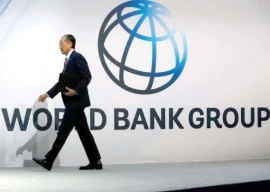
Pakistan is grappling with economic, environmental, and social issues that have become increasingly complex in recent years. Poverty is on the rise, and the government faces limited options to combat it. According to the latest World Bank report, approximately 39.4% of the population lives below the poverty line, amounting to 95 million people. It is alarming that an additional 12 million people fell into poverty during the last fiscal year. Food insecurity has been a persistent issue in Pakistan, with roughly 58.8% of the population experiencing it prior to the 2022 floods. Pakistan ranks 102nd out of 125 countries in the Global Hunger Index, highlighting the severity of the problem.
Economic growth poses another significant challenge affecting various aspects of the country. The World Bank estimates that Pakistan’s real GDP contracted by 0.6% during FY23. Future economic growth scenarios are equally discouraging, with GDP projected to grow by 1.7% and 2.4% during FY2024 and FY2025, respectively, indicating a protracted difficult situation.
Furthermore, environmental degradation and climate change represent serious threats to Pakistan, consistently ranking among the top 10 countries most vulnerable to climate change. Climate-related disasters have had devastating impacts on Pakistan, with the 2022 floods alone incurring a cost of $30 billion. Pakistan’s dependency on agriculture further exacerbates its vulnerability.
Given this backdrop, Pakistan needs opportunities and pathways to address these multifaceted challenges. The Belt and Road Initiative (BRI) offers a potential solution to help Pakistan overcome these challenges, particularly as the host of the China-Pakistan Economic Corridor (CPEC), which provides access to the opportunities presented by BRI 2.0.
Firstly, to revive the economy, Pakistan requires opportunities that can stimulate growth. BRI 2.0 offers Pakistan opportunities at two levels. First, Pakistan can benefit from significant projects like ML-1, a critical project that addresses the transportation network in Pakistan. Pakistan lacks a high-quality, efficient, and cost-effective supply chain network, and the state of the railway infrastructure further complicates matters. After the completion of ML-1, it is expected that train speeds will double, and the line’s capacity from Peshawar to Karachi and Karachi to Peshawar will increase from 34 to 134 daily trains, providing a substantial boost to the railway.
Read BRI drives Pakistan’s green transformation
Furthermore, during the construction phase, Pakistan can benefit on two fronts. It will create jobs, both directly and indirectly, addressing the country’s pressing need for employment. Additionally, during construction, Pakistan will require various materials, such as steel, iron, and other supplies that can be sourced from Pakistan’s steel mills. Proper policies can help revive Pakistan’s steel industry.
Secondly, Pakistan can take advantage of the new opportunities offered by BRI 2.0. President Xi Jinping introduced a new initiative with the slogan “small but beautiful” initiatives, focusing on funding and investing in small programmes that address societal needs. This initiative emphasises livelihoods and the needs of small communities, with China Development Bank and the Export-Import Bank of China establishing a special window of $48.7 billion. China will invest in 1,000 small-scale livelihood assistance projects and work with developing and least-developed countries to build their capacity to produce high-quality human capital. Investment in vocational training through the Luban programme and other initiatives is a key component.
This initiative presents excellent opportunities for Pakistan. For instance, Pakistan can develop a programme to support Gwadar’s fishing community. Gwadar’s fishing community requires assistance to modernise their practices, including access to modern equipment and technology to enhance their fishing methods, as well as training for preserving, marketing, and using modern technology for activities like e-commerce. This approach can improve the lives of the fishing community while countering anti-CPEC sentiments.
Additionally, Pakistan can devise capacity-building programmes for the agriculture, tourism, and mineral sectors, addressing the outdated skills prevalent in these sectors. For example, Pakistan’s agriculture sector, a major part of the economy, is run by farmers with outdated skills, impeding production potential. With the added challenge of climate change, farmers lack the necessary skills to combat its impacts or adopt climate-smart agriculture practices. Pakistan currently lacks institutions for agricultural vocational training. Therefore, under the “small but beautiful” initiative, Pakistan can collaborate with China to establish such schools or institutes, particularly with agriculture being a pillar of CPEC.
Finally, BRI’s future focus on green development provides opportunities for Pakistan to attract green investment for industrialisation and implement green development initiatives through capacity building programmes, training officials, and personnel to implement a green development agenda.
In conclusion, this discussion highlights only a few opportunities, with many more available. China is prepared to collaborate with Pakistan for future cooperation, provided that Pakistan enhances its working environment, presents improved proposals, and effective implementation plans. Failing to do so means that Pakistan must acknowledge that there are 151 competitors to CPEC and the opportunities it presents.
THE WRITER IS A POLITICAL ECONOMIST AND A VISITING RESEARCH FELLOW AT HEBEI UNIVERSITY, CHINA
Published in The Express Tribune, November 13th, 2023.
Like Business on Facebook, follow @TribuneBiz on Twitter to stay informed and join in the conversation.


1732020599-0/BeFunky-collage-(73)1732020599-0-165x106.webp)
1731926127-0/zayn-(1)1731926127-0-165x106.webp)
1732018399-0/BeFunky-collage-(72)1732018399-0-165x106.webp)













COMMENTS
Comments are moderated and generally will be posted if they are on-topic and not abusive.
For more information, please see our Comments FAQ